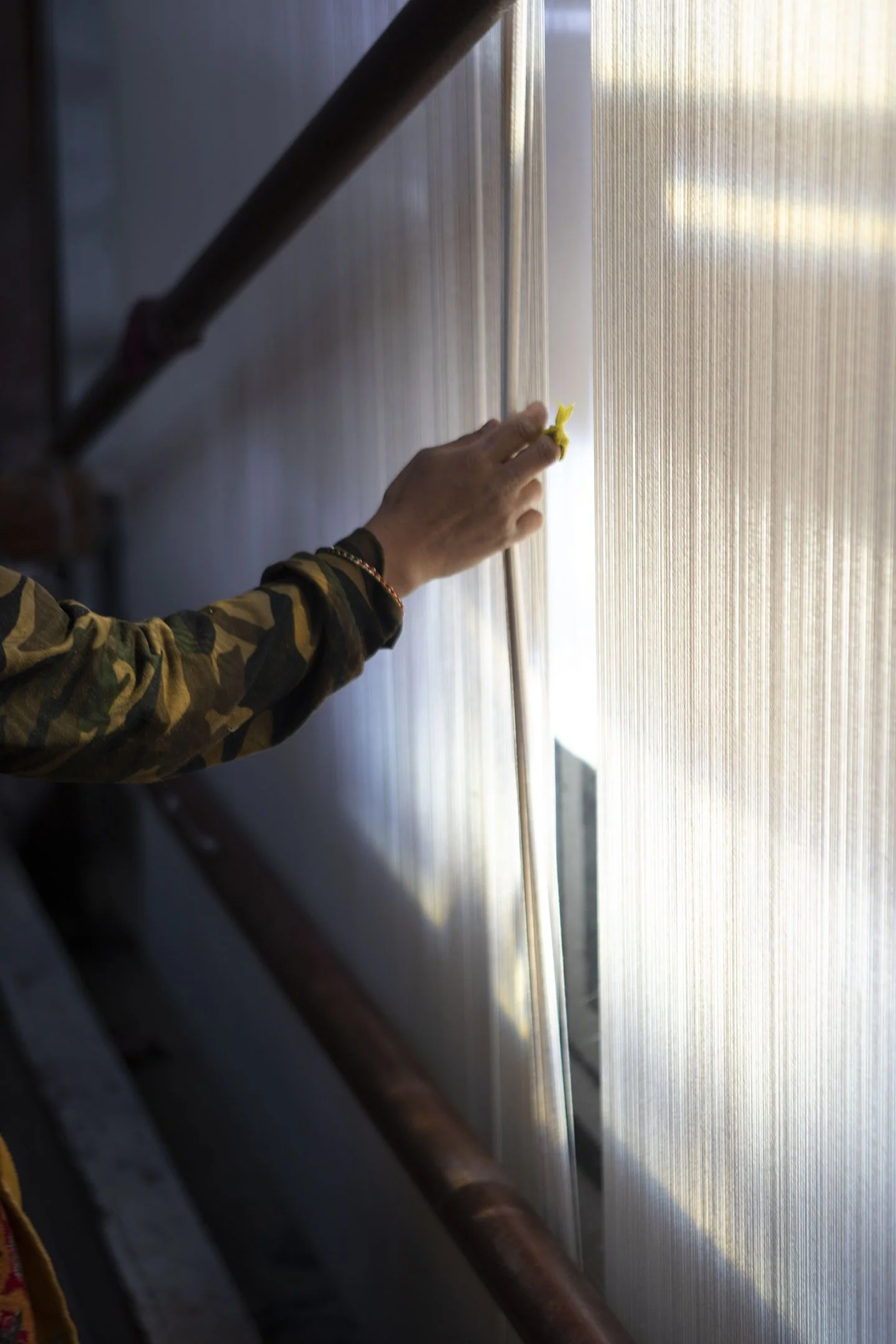Naturally beautiful – modern rugs from Nepal
A hand-knotted Nepalese rug is a masterpiece of traditional craftsmanship. Over the centuries, production techniques have hardly changed.
From the shearing of the sheep to on-site quality controls, even today, hardly any of the work is done by machines. The exclusive use of natural materials and the manual processing determine the unique nature of each piece and make Nepalese rugs so special in terms of their look and feel, quality and sustainability.
Tibetan highland wool is one of the most beautiful and robust qualities worldwide.
The sheep live at altitudes of over 13,000 ft all year round, exposed to the rough climate of the Himalayas. In summer, they are brought down into the valleys to be shorn. The wool receives no kind of chemical treatment, retaining its natural characteristics: It is durable and dirt-resistant and improves the room climate. The wool is combed and spun by hand. In Nepal, balls of yarn are traditionally used at the loom.
The natural white yarn can be dyed to achieve a virtually unlimited range of colours.
Due to its irregular structure and the manual dyeing process, fibres will absorb the colour to varying degrees.
The resulting colour variations, known as abrash, give the colour its vivid appearance and the rug its authentic look.
For additional gloss and an exciting sheen, we add silk, whereas nettle fibre underscores the natural character of a rug and enhances its durability. The material mix can be adapted to suit customers' preferences and requirements.
First, full-scale copies of the designs are drawn on large sheets of paper, which are then coloured and serve as templates to guide the weavers at the loom. The design archives with their hundreds of templates are the treasure house of our workshop.
The traditional knotting technique used in Nepal is the loop knot, which is knotted around a metal rod and then cut open with a knife, resulting in the characteristic soft pile of Nepalese rugs. 2–5 weavers work on a rug simultaneously and teams are put together based on their average number of knots and working speed.
Depending on the size and quality of the rug, they complete about 2.5–4.0 in a day. Today, both men and women work as carpet weavers. The production of hand-knotted rugs is based on teamwork and requires a harmonious collaboration in order to achieve outstanding results.
Once completed, the rug is washed by hand. This step embellishes it, makes the colours stand out more vividly and flushes out loose fibres and pieces of yarn. The wet rug is stretched out evenly on a frame and put in the sun to dry.
After washing and drying, the rug receives the finishing touches: It is trimmed with large scissors until the pile is completely even and looks perfectly harmonious. In order to highlight the design, careful carving along the contours can be required.
Finally, the sides of the rug are seamed and the warp threads at the ends are either fixed with cotton bindings or braided into elaborate fringes.
Before it leaves Nepal, the rug undergoes a strict external quality control focusing on the workmanship, colour accuracy, size and execution of the design. 12–16 weeks after placing the order, the rug is delivered to your home.








